Challenge Entrepreneur

How can women overcome gender bias in the startup world ?
Gender bias is a pervasive issue in many industries, including the startup world. Women face unique challenges when it comes to funding, networking, and building their businesses. However, there are strategies that women can employ to overcome these obstacles and thrive in the startup world. Here are some tips: 1\. Build a Strong Network: Networking is crucial for any entrepreneur, but it's especially important for women who may not have as many natural connections in the industry. Attend industry events, join professional organizations, and connect with other entrepreneurs on social media. Make sure to diversify your network by seeking out people from different backgrounds and perspectives. 2\. Develop Your Skills: Take courses or attend workshops to develop your skills in areas such as finance, marketing, and management. This will not only make you a more well-rounded entrepreneur but also demonstrate your commitment to learning and growing. 3\. Be Confident and Assertive: Women are often socialized to be polite and deferential, which can sometimes hold them back in business settings. Practice being confident and assertive in meetings and negotiations. Remember that you deserve to be taken seriously and that your ideas and opinions are valuable. 4\. Seek Out Mentors and Advisors: Find mentors or advisors who can offer guidance and support as you navigate the startup world. Look for people who have experience in your industry and who share your values and goals. 5\. Leverage Your Strengths: Women often bring unique strengths to the table, such as empathy, collaboration, and creativity. Emphasize these qualities in your pitches and marketing materials, and don't be afraid to highlight how they set you apart from your competitors. 6\. Stay Persistent: Starting a business is hard work, and there will inevitably be setbacks along the way. Stay persistent and focused on your goals, even when faced with rejection or failure. Remember that every challenge is an opportunity to learn and grow. 7\. Advocate for Yourself and Others: Speak up about issues of gender bias and inequality whenever you see them. Use your platform to advocate for change within your industry and support other women who are facing similar challenges. By working together, we can create a more equitable and inclusive startup world for all entrepreneurs.

What is the correlation between immigration policies and entrepreneurship ?
Immigration policies significantly impact entrepreneurship by influencing talent access, regulatory environments, cultural diversity, and economic opportunities. Talent-friendly policies like Canada's Express Entry System and the U.S. H-1B Visa attract skilled immigrants, enhancing competitiveness. Supportive regulatory frameworks, such as Australia's Business Innovation and Investment Program and the UK's Tier 1 Entrepreneur Visa, simplify business establishment processes. Diversity-promoting policies, like New Zealand's Residence Programme and Germany's Blue Card EU, foster innovative solutions through varied perspectives. Economic opportunities arise from policies like Sweden's Startup Visa and Ireland's Startup Entrepreneur Programme, which create market gaps and support immigrant entrepreneurs. Governments should implement policies encouraging entrepreneurship among immigrants and local populations.

What strategies can female entrepreneurs use to secure funding for their ventures ?
Female entrepreneurs face unique challenges when it comes to securing funding for their ventures. However, there are several strategies that can be used to increase the chances of success. These include networking and building relationships, developing a solid business plan, leveraging personal networks, seeking out grants and awards, considering crowdfunding, and utilizing online funding platforms. By staying persistent and never giving up, female entrepreneurs can secure the funding they need to bring their dreams to life.

How do women entrepreneurs navigate the legal aspects of starting a business ?
Starting a business as a female entrepreneur involves navigating various legal considerations. This guide offers strategies for handling these aspects, including understanding legal frameworks, protecting intellectual property through trademarks and copyrights, drafting contracts, complying with employment laws, ensuring financial compliance, and managing risks with insurance. By addressing these components systematically, women entrepreneurs can establish a solid foundation for their businesses while minimizing legal risks and ensuring smooth operations.

Can sports provide a platform for individuals to challenge themselves and reach their full potential ?
**Summary:** This essay posits that sports provide a comprehensive platform for individuals to challenge themselves and reach their full potential. It explores how sports offer psychological benefits such as mental toughness, goal setting, and confidence building; physiological benefits including improved physical fitness, skill development, and resilience; and social benefits like teamwork, leadership, and camaraderie. Personal stories of overcoming adversity further underscore the transformative power of sports in personal growth. The conclusion affirms that sports are not just about physical activity but are a means to unlock human potential holistically.

How can women leverage social media to promote their businesses ?
Social media offers a powerful platform for women entrepreneurs to promote their businesses. To effectively leverage it, they should define their brand story, choose the right platforms, build a strong presence, engage with their audience, collaborate with other women entrepreneurs, utilize influencer marketing, and monitor performance through analytics. By following these strategies, women can harness the power of social media to elevate their businesses, connect with customers, and achieve their entrepreneurial dreams.

How do female entrepreneurs balance work and family life ?
Balancing work and family life for female entrepreneurs requires prioritizing time, delegating responsibilities, setting realistic goals, taking care of oneself, communicating with family, and seeking support from others. By implementing these strategies, a healthy balance between professional ambitions and personal responsibilities can be achieved.

Can starting a small business be a path to significant wealth growth ?
Starting a small business can be a path to significant wealth growth, but it comes with challenges and risks. Advantages include entrepreneurial opportunities, flexibility, innovation, and job creation. However, financial risk, market competition, regulatory compliance, and cash flow management are potential challenges. Successful strategies involve research, focusing on customer needs, building a strong brand, networking, and continuous innovation. With careful planning and hard work, entrepreneurs can increase their chances of success and achieve long-term financial stability.

What are the main challenges faced by low-income countries in achieving sustainable development ?
Low-income countries face numerous challenges in achieving sustainable development, including poverty reduction, environmental protection, social inclusion, and institutional capacity. Addressing these challenges requires a comprehensive approach that involves collaboration between governments, civil society organizations, and international partners.

What are the main challenges in achieving carbon neutrality ?
Achieving carbon neutrality is a complex and multifaceted challenge that requires a coordinated effort from governments, businesses, and individuals. Some of the main challenges include economic implications, technological barriers, political will, public awareness and participation, natural resource constraints, energy demand growth, existing lock-in effects, legislative and regulatory hurdles, cultural and social factors, and research and development needs. It's a daunting task, but one that is necessary for the long-term health of our planet.

What advice would successful businesswomen give to aspiring female entrepreneurs ?
Advice from successful businesswomen to aspiring female entrepreneurs includes believing in oneself, continuous learning and personal development, embracing risks and challenges, effective financial management, maintaining a work-life balance, collaboration and delegation, strong branding and marketing strategies, and upholding ethical practices and social responsibility. By following this advice, aspiring female entrepreneurs can navigate the challenges of starting and growing their own businesses while staying true to their values and goals.

What challenges do engineers face when designing rockets for deep space exploration ?
Designing rockets for deep space exploration poses several challenges to engineers, including extreme conditions, long-duration missions, communication delays, limited resources, complexity of systems, safety concerns, cost constraints, environmental impact, and regulatory compliance. These challenges must be carefully considered to create effective solutions that enable us to explore our solar system and beyond.
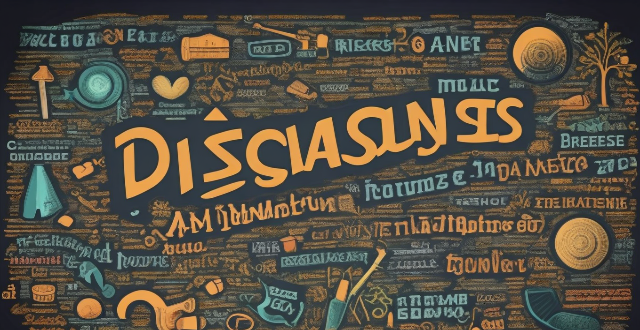
What are the challenges in implementing environmental legislation ?
The text discusses the challenges in implementing environmental legislation, including lack of awareness and education, insufficient funding and resources, political will and support, legal and administrative hurdles, technological limitations, and international cooperation and coordination. Addressing these challenges requires a multi-faceted approach involving education, advocacy, policy reform, and collaboration at all levels of society.
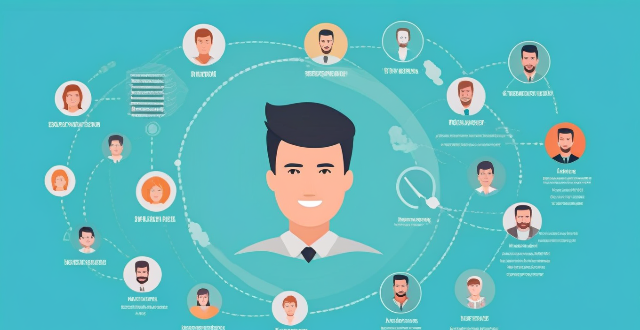
What are the challenges faced by IoT ?
The Internet of Things (IoT) faces several challenges such as lack of standardization, security and privacy concerns, scalability issues, interoperability problems, limited battery life, high costs, complexity of management, and legal and regulatory challenges. Addressing these challenges requires collaboration between manufacturers, developers, regulators, and users to create standardized protocols, secure systems, and scalable infrastructure that can support the growing number of IoT devices.

What are some examples of successful celebrity personal brands ?
Celebrity personal brands are a powerful tool in the entertainment industry. They allow celebrities to establish themselves as more than just an actor, singer, or athlete. Instead, they become a brand that represents their unique personality, values, and interests. Here are some examples of successful celebrity personal brands: - Oprah Winfrey: known for her philanthropic efforts, media empire, and inspirational speaking. - Kim Kardashian: rose to fame on reality TV, launched multiple successful businesses, and is a social media influencer. - Dwayne "The Rock" Johnson: began as a professional wrestler, transitioned into acting, and is known for his dedication to fitness. - Beyoncé: Grammy-winning musician, fashion icon, and activist for social justice issues. - Elon Musk: founder of several successful companies, innovator, and active on social media despite being a busy CEO.
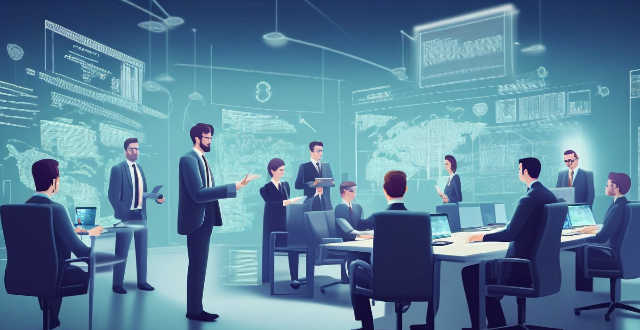
What challenges do we face in implementing resource-efficient utilization globally ?
Implementing resource-efficient utilization globally presents several challenges, including lack of awareness and education, economic barriers, technological limitations, legal and policy constraints, and cultural differences. Addressing these challenges will require a multifaceted approach that involves raising awareness, providing economic incentives, investing in research and development, creating supportive policies and regulations, and fostering cross-cultural understanding and collaboration.
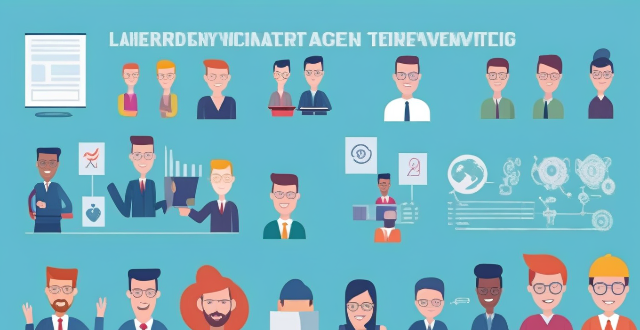
What are some common challenges faced by sports leaders and how can they be overcome ?
Sports leaders face a myriad of challenges that test their ability to manage teams effectively. These include maintaining team morale, dealing with performance pressure, handling injuries, balancing development and winning, navigating media scrutiny, managing finances, adapting to change, and upholding ethical standards. Strategies like fostering team cohesion, implementing mental skills training, having injury management plans, long-term planning, media training, financial diversification, staying informed, and promoting transparency can help overcome these challenges.

What challenges do we face in achieving a continuous supply of sustainable energy ?
The challenges to achieving a continuous supply of sustainable energy include technological limitations, economic barriers, political and social factors, infrastructure and grid integration issues, and environmental impacts. Addressing these challenges requires collaboration between governments, businesses, and individuals to work towards a more sustainable future for our planet.

What challenges do developing countries face in adopting climate-smart technology ?
Developing countries face challenges in adopting climate-smart technology, including lack of financial resources, limited access to technology, inadequate legal and policy frameworks, limited human capacity, insufficient infrastructure, and cultural barriers. These challenges can hinder the adoption and implementation of climate-smart technology on a large scale, limiting their ability to address climate change effectively.

What are the challenges faced by the wind energy industry ?
The wind energy industry faces several challenges including intermittency, site selection, manufacturing issues, maintenance and reliability concerns, and environmental impact. Addressing these challenges requires innovation, policy support, and collaboration between stakeholders and communities.

What are the key challenges faced by female-centric non-profit organizations, and how can they be overcome ?
Female-centric non-profit organizations face several key challenges, including limited funding and resources, lack of visibility and recognition, gender bias and stereotyping, limited access to technology and digital tools, and balancing advocacy and service delivery. To overcome these challenges, organizations can explore alternative funding sources, increase visibility through social media and community events, prioritize diversity and inclusion, leverage cost-effective technology solutions, and build alliances with other organizations. By addressing these challenges, female-centric non-profit organizations can effectively support women and girls and create positive change in their communities.
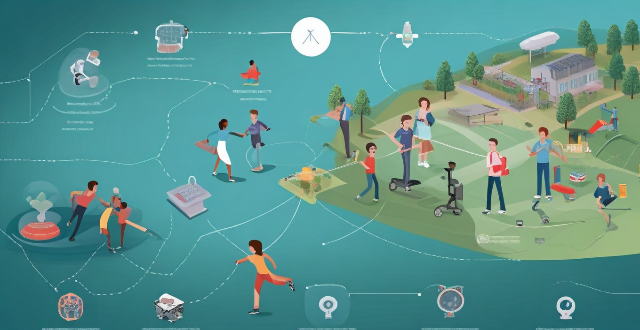
What are the potential risks and challenges associated with the increasing reliance on technology in sports ?
The integration of technology in sports has revolutionized the way games are played, watched, and analyzed. However, this increasing reliance on technology also brings several potential risks and challenges that need to be addressed, including overreliance on technology, cheating and unfair advantages, data privacy and security concerns, cost and accessibility issues, and health concerns related to excessive use of certain technologies. Addressing these challenges is crucial for maintaining the integrity and fairness of sports while still enjoying the benefits of technological advancements.

What are the key challenges facing the growth of green finance ?
Green finance is facing several key challenges, including lackGreen finance is facing several key challenges, including lack data availability, inadequ there needs to be greater harmonization and standardization of definitions and reporting requirements for green finance, increased efforts to collect and share data on environmental impacts and risks, stronger regulatory frameworks that encourage transparency and accountability, greater education and outreach efforts aimed at increasing awareness and understanding of green finance among investors, and greater emphasis on highlighting the potential economic benefits of green finance.

What are the current global challenges in achieving gender equality in education ?
Gender equality in education is a fundamental human right and key to economic growth, social development, and poverty reduction. However, several challenges hinder its achievement globally. One major challenge is the lack of access to education for girls due to poverty, cultural beliefs, and traditional roles assigned by society. Another challenge is gender bias in curriculum and teaching methods that lead to a lack of representation and role models for girls while perpetuating harmful stereotypes about gender roles. Sexual harassment and violence against girls in schools also hinder gender equality in education by creating an unsafe learning environment that can lead to low self-esteem, anxiety, depression, and dropping out of school altogether. Insufficient funding for girls' education prevents schools from providing proper facilities, materials, or trained teachers needed to support girls' learning. Addressing these challenges requires policy changes, increased funding, improved curriculum design, teacher training programs, and awareness campaigns targeting both parents and communities.

What challenges do people face while shopping globally ?
Shopping globally can be an exciting experience, but it also comes with its own set of challenges. These challenges can range from language barriers to shipping delays and customs issues. In this article, we will discuss some of the most common challenges faced by people while shopping globally. One of the biggest challenges when shopping globally is the language barrier. Many online stores operate in different languages, which can make it difficult for shoppers to understand product descriptions, return policies, and other important information. This can lead to confusion and frustration, especially if there are no translation options available. Another challenge faced by global shoppers is shipping delays. Depending on the country you are shipping to, it can take several weeks or even months for your package to arrive. This can be frustrating if you need the item urgently or if it is a gift for someone else. Additionally, shipping costs can also be quite high, which can make the overall cost of the purchase more expensive. Customs issues are another challenge that global shoppers may face. When purchasing items from abroad, they may be subject to customs duties and taxes that can significantly increase the cost of the item. Additionally, some items may be prohibited from being imported into certain countries, which can result in them being confiscated at customs. Returning items purchased from international retailers can also be challenging. Many retailers have strict return policies that require the item to be returned within a certain time frame or only accept returns for certain reasons. Additionally, returning items can be expensive due to shipping costs and may take a long time to process. Currency conversion can also be a challenge when shopping globally. The exchange rate between currencies can fluctuate rapidly, which can make it difficult to determine the exact cost of an item in your local currency. This can lead to unexpected charges on your credit card statement or make it difficult to compare prices between different retailers. Finally, another challenge faced by global shoppers is limited product availability. Some products may not be available in certain countries or regions, which can limit your options when shopping online. Additionally, some retailers may not offer international shipping or may only ship to certain countries. In conclusion, shopping globally can come with its own set of challenges such as language barriers, shipping delays, customs issues, return policies, currency conversion, and limited product availability. However, with careful planning and research, these challenges can be overcome, allowing you to enjoy the benefits of shopping from around the world.

What are the challenges faced by immigrants in terms of cultural integration ?
Immigrants face numerous challenges in cultural integration, including language barriers, employment difficulties, sociocultural differences, legal and policy issues, educational hurdles, housing and settlement problems, and healthcare access concerns. Addressing these challenges is crucial for building inclusive communities where immigrants can successfully integrate and thrive.
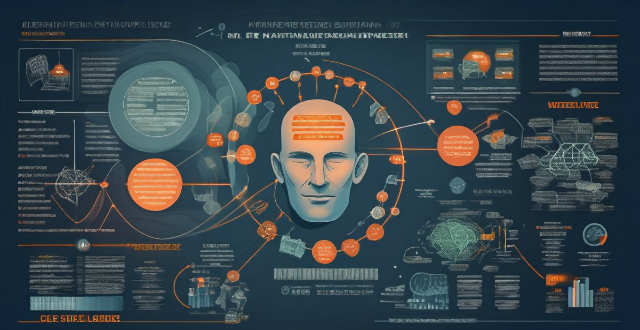
What are the challenges faced by small and medium-sized enterprises (SMEs) in achieving energy efficiency ?
Small and medium-sized enterprises (SMEs) face unique challenges in achieving energy efficiency, including limited financial resources, lack of information and knowledge, resistance to change, access to technology, regulatory compliance, and limited staff expertise. Addressing these challenges can help SMEs improve their energy efficiency and reduce costs over time.

What challenges might I face when constructing a knowledge framework, and how can I overcome them ?
The text discusses the challenges in constructing a knowledge framework and provides solutions to these challenges. The challenges include identifying relevant information, structuring the framework, technical limitations, human factors, and maintenance and updates. The solutions suggested are using reliable sources, implementing filtering techniques, consulting with experts, using an iterative approach, visual mapping, modular design, custom development, flexible design, peer review, user testing, feedback loops, automated systems, dedicated teams, and regular reviews. By anticipating potential challenges and implementing appropriate solutions, you can create a robust and effective knowledge framework that supports learning, decision-making, and innovation within your domain.

What are the challenges faced by the insurance industry in addressing climate change ?
The insurance industry faces several challenges in addressing climate change, including data-related issues, regulatory and legal concerns, and operational difficulties. These challenges can be broadly classified into three categories: data-related challenges, regulatory and legal challenges, and operational challenges. Data-related challenges include insufficient historical data and lack of standardization in collecting and analyzing climate-related data across the insurance industry. Regulatory and legal challenges involve lack of clarity in regulations governing how insurers should account for climate change in their risk assessments and pricing strategies, as well as liability concerns due to increased natural disasters and extreme weather events. Operational challenges include limited capacity to model climate risks, inadequate infrastructure for disaster response, and difficulty in pricing policies accurately. To overcome these challenges, insurers need to work together and invest in research and development to develop more sophisticated models and hire experts who can help them understand and manage climate risks effectively. They also need to continuously monitor climate trends and adjust their pricing strategies accordingly. By doing so, the insurance industry can play a vital role in managing the risks associated with climate change.

What are the challenges in building a nationwide charging network ?
**Summary:** Building a nationwide charging network for electric vehicles (EVs) presents several challenges that can be categorized into technical, infrastructure, financial, and social/environmental aspects. Technical challenges include ensuring scalability, compatibility, reliability, energy management, and fast charging capabilities. Infrastructure challenges involve achieving comprehensive coverage, site selection, infrastructure development, land use and zoning compliance, and maintenance operations. Financial challenges encompass high initial costs, return on investment, funding sources, pricing strategies, and economic viability assessment. Social and environmental challenges include gaining public acceptance, education and awareness, minimizing environmental impact, ensuring equitable access, and regulatory compliance. Addressing these challenges is crucial for the successful implementation and long-term success of a nationwide charging network for EVs.